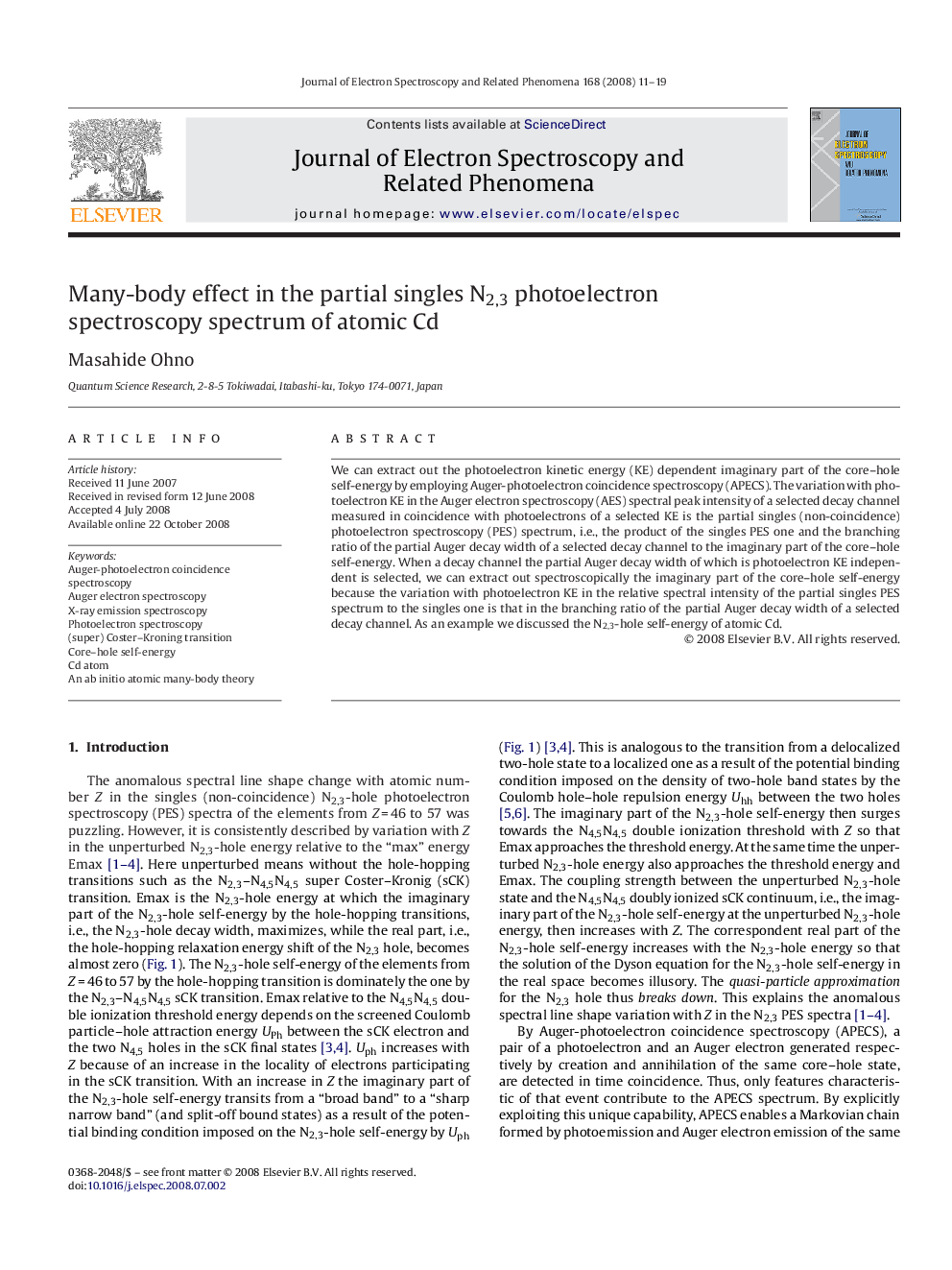| Article ID | Journal | Published Year | Pages | File Type |
|---|---|---|---|---|
| 5396837 | Journal of Electron Spectroscopy and Related Phenomena | 2008 | 9 Pages |
Abstract
We can extract out the photoelectron kinetic energy (KE) dependent imaginary part of the core-hole self-energy by employing Auger-photoelectron coincidence spectroscopy (APECS). The variation with photoelectron KE in the Auger electron spectroscopy (AES) spectral peak intensity of a selected decay channel measured in coincidence with photoelectrons of a selected KE is the partial singles (non-coincidence) photoelectron spectroscopy (PES) spectrum, i.e., the product of the singles PES one and the branching ratio of the partial Auger decay width of a selected decay channel to the imaginary part of the core-hole self-energy. When a decay channel the partial Auger decay width of which is photoelectron KE independent is selected, we can extract out spectroscopically the imaginary part of the core-hole self-energy because the variation with photoelectron KE in the relative spectral intensity of the partial singles PES spectrum to the singles one is that in the branching ratio of the partial Auger decay width of a selected decay channel. As an example we discussed the N2,3-hole self-energy of atomic Cd.
Keywords
Related Topics
Physical Sciences and Engineering
Chemistry
Physical and Theoretical Chemistry
Authors
Masahide Ohno,
